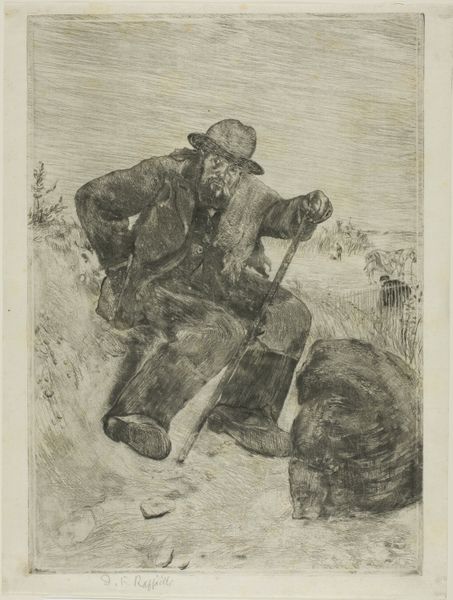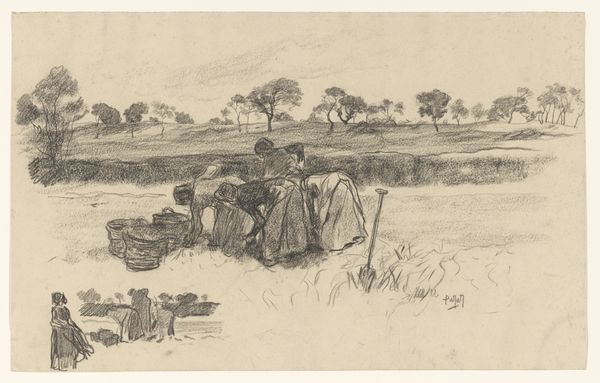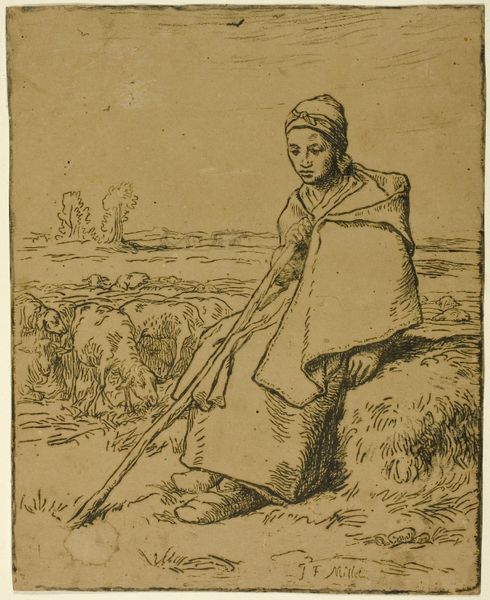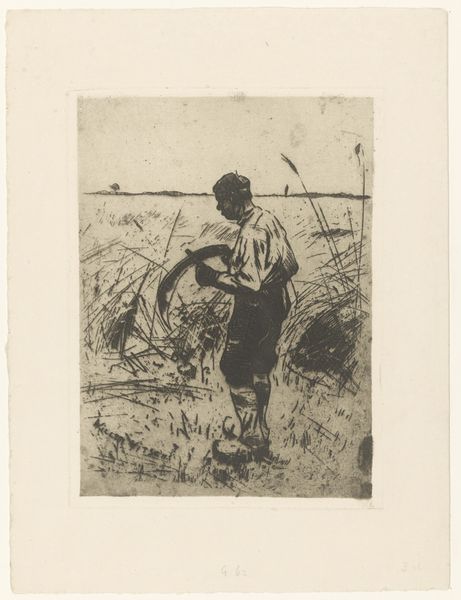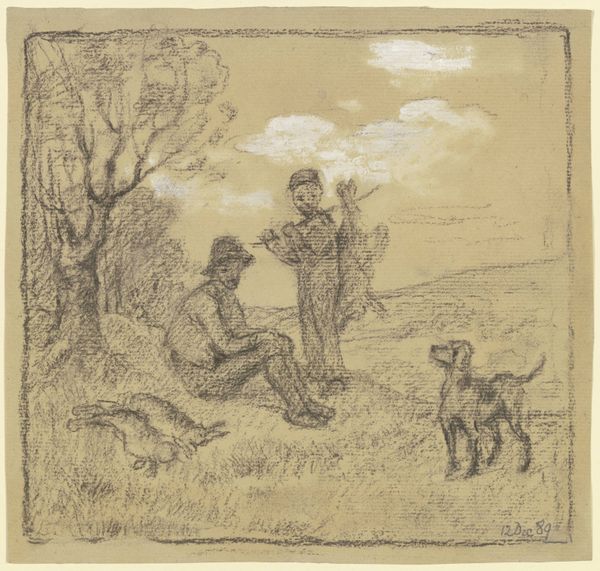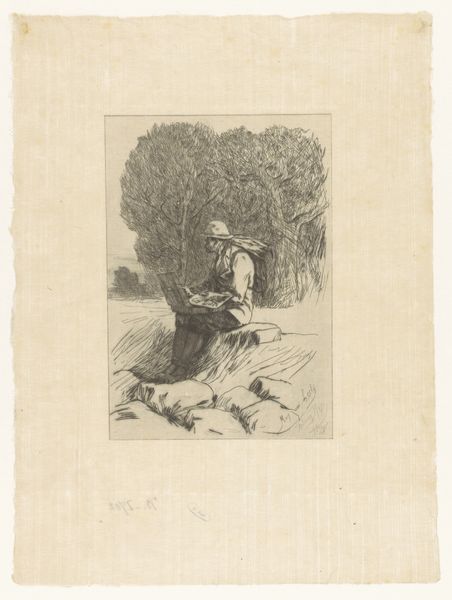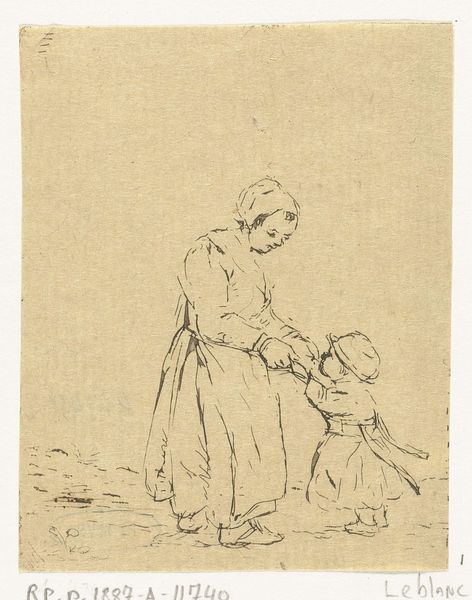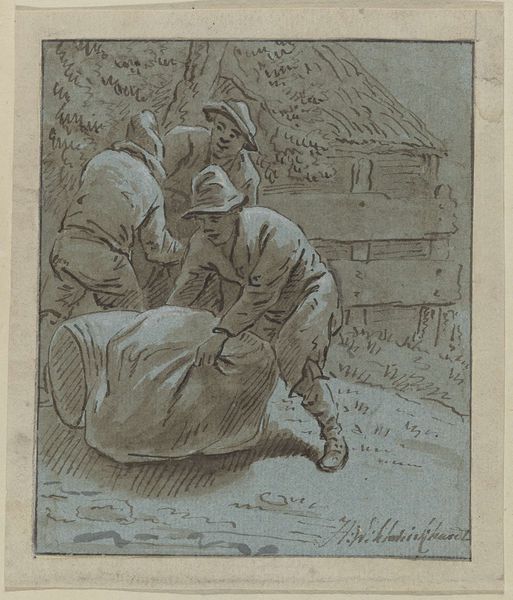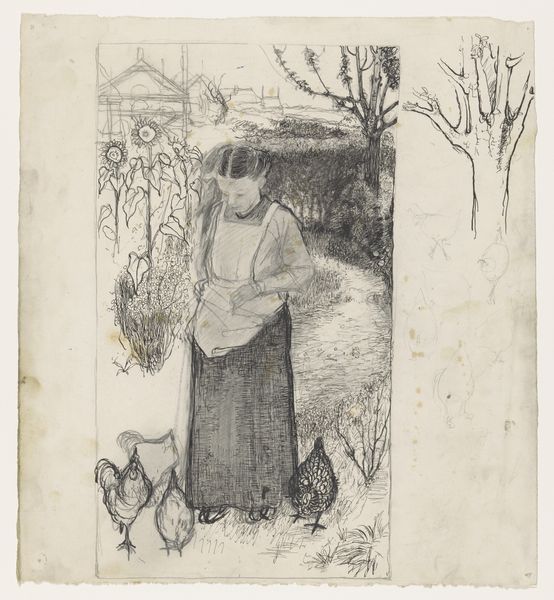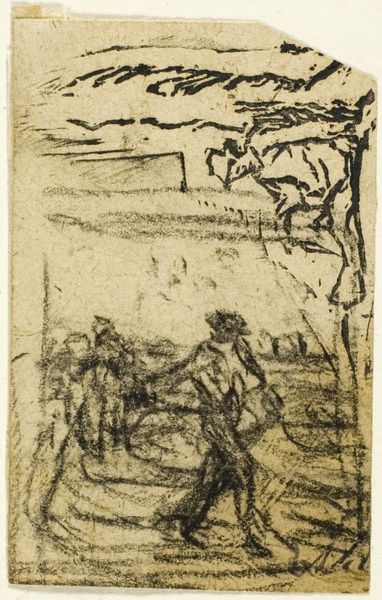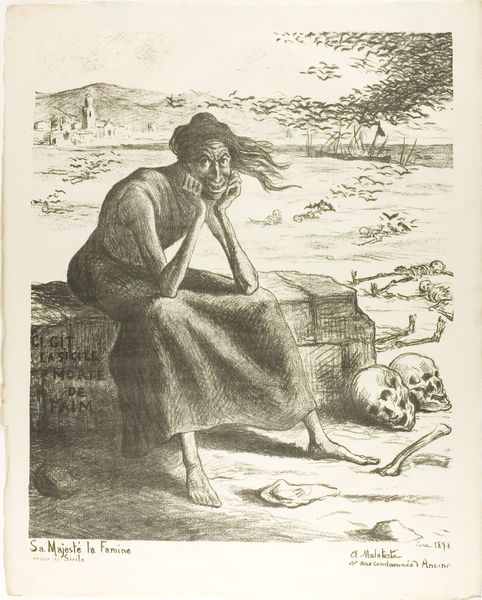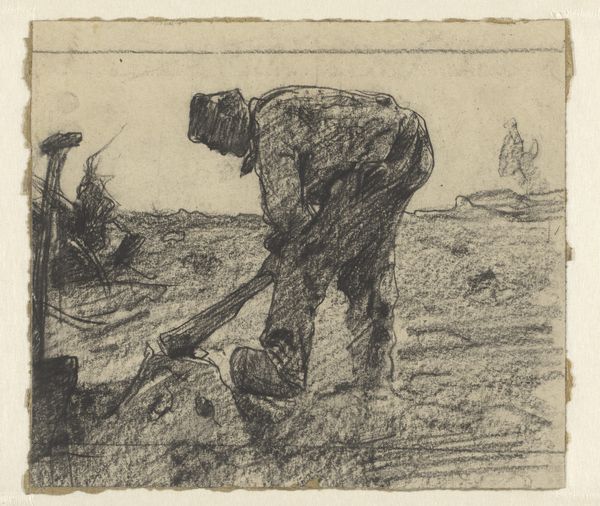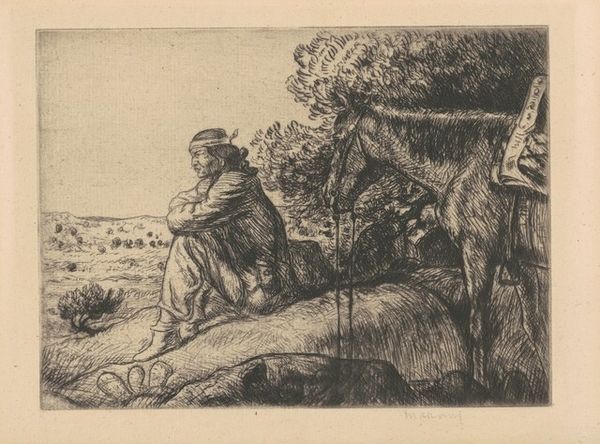
drawing, pencil, graphite
#
portrait
#
drawing
#
pen sketch
#
pencil sketch
#
landscape
#
pencil
#
graphite
#
realism
Dimensions: height 282 mm, width 202 mm
Copyright: Rijks Museum: Open Domain
Curator: Willem Witsen created this work, "Zittende schaapherder," sometime between 1870 and 1923. It’s currently held at the Rijksmuseum, and the piece is crafted with pencil and graphite. What’s your initial read? Editor: Well, I immediately notice the subdued, almost somber mood. The composition is stark – a solitary figure in a desolate landscape. It evokes a sense of isolation, doesn't it? Curator: Absolutely. And look at the materials—the graphite and pencil work to convey this sense of texture, but I also notice the technique is far from a finely wrought representation. It feels very much like labor: sketching for purpose over style. Notice, even, the lines left un-erased. What do you see in the man’s attire and posture? Editor: The shepherd's garb—the cap, the heavy coat—these suggest a specific socio-economic reality. But, for me, the posture is what truly speaks. He sits with arms crossed, head slightly bowed; classic signifiers of weariness. And consider sheep traditionally represent innocence and vulnerability. This contrasts sharply with the harsh lines and tones of the drawing itself. A powerful, if subtle, statement about human existence, maybe. Curator: An intriguing take, placing that traditional symbolism within the historical labor landscape of the period. One could consider his tools lying idly nearby: these become another visual tool to understand the economic situation. What else can you decipher? Editor: Look at how Witsen uses the sparse background details - the implied flock of sheep in the background and that vague, almost dreamlike, sky. It's all quite muted. Almost as if to emphasize the mundane yet essential nature of shepherding, removing all romanticism associated. Perhaps it reflects a shift in the perception of rural labor at that time? A move from idealized pastoral scenes to grittier portrayals of the working class? Curator: A convincing interpretation. The context of late 19th-century social change makes your emphasis on the "grittier portrayal" compelling. Witsen himself, after all, was an active participant in artistic circles deeply engaged with social realism and labor movements. Editor: Ultimately, the power of this sketch lies in its ability to convey the universal human experience of toil and rest, regardless of the sitter’s particular identity. It provides enduring symbols. Curator: For me, understanding the materiality really shifts it toward labor. Witsen prompts consideration about where art stems, and where it leads.
Comments
No comments
Be the first to comment and join the conversation on the ultimate creative platform.
